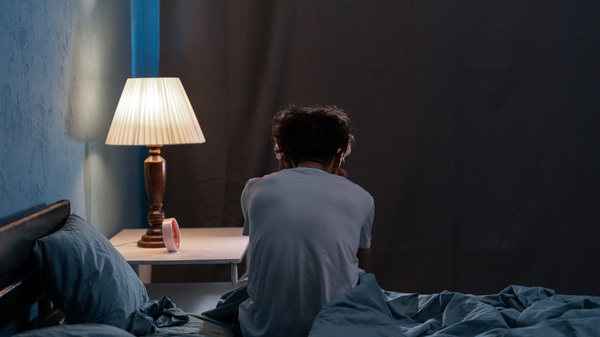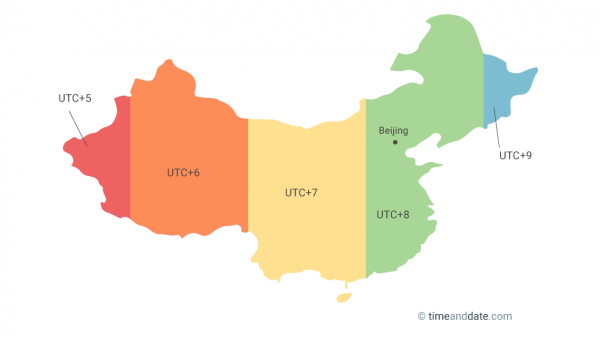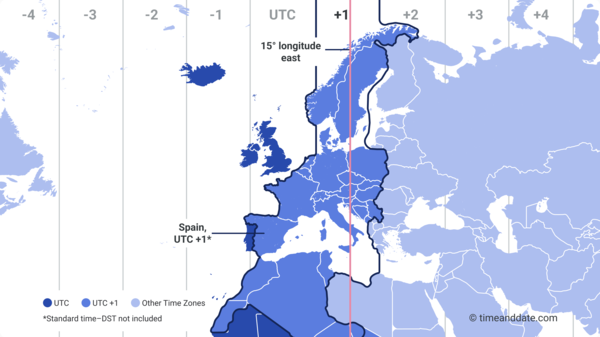When Your Clock Doesn’t Reflect Solar Time
In some countries, civil time differs drastically from solar time. In extreme cases, the Sun rises and sets so early or late that residents may experience a kind of jet lag without even traveling.

Living on the western edge of large time zones forces you to get up in the dark to go to work. The further the time on your clock gets from the cycle of the Sun, the more it can mess with your body clock.
©iStockphoto.com/Andrii Lysenko
Time Zones Aren’t Perfect
In a perfect world, each time zone would cover 15 degrees longitude and differ by one hour from the next time zone, making for 24 time zones worldwide. The local time in each zone would reflect the local solar time as closely as possible.
In reality, however, it’s up to each country or region to decide what time zone it should be in and if they want to switch to Daylight Saving Time (DST).
China Holds the World Record
Some countries have taken that idea to the extreme—and the prime example is China.
Despite being almost the same size laterally as the continental USA, China only has a single time zone. This time zone—called China Standard Time (CST)—would typically warrant five 15-degree time zones based on its longitudinal dimensions.

In theory, China could have five time zones, but the country has only one official time zone.
©timeanddate.com
This means the timing of sunrise and sunset in China can vary by over three hours, depending on the time of the year.
At the same time, since solar time is determined by geographic location, it makes for some extreme sunrise and sunset times in China’s peripheral regions:
- In Kashgar, a city in the westernmost province of Xinjiang, the year’s latest sunrise in January is at 10:16 (10:16 am).
- Residents of Fushun, in east China, see the Sun go down as early as 16:13 (4:13 pm) in early December.
These times may not seem extreme to people living in regions experiencing Midnight Sun and Polar Night. However, please keep in mind that both cities are located thousands of miles south of the polar circle, on the same latitude as New York, USA, or Istanbul, Turkey. The unusual Sun times are caused exclusively by the discrepancy between the cities’ geographic location and the time zone that determines the time on the clock.
But China is not the only example.
Like New York and Utah Sharing One Time Zone
Also India, despite its size, only has one time zone. The country stretches 3000 km (about 1800 miles) from west to east, spanning roughly 30 degrees of longitude. In the US, this would be the same as Utah and New York sharing one very large time zone.
If the country were to base its time zones on solar time, it would have three 15-degree time zones, but since it only has one, the Sun rises almost 90 minutes earlier in Dong in the far east than in Guar Mota in the west.
Spain in the Wrong Time Zone
There are also examples of countries being “in the wrong time zone” with regard to their geographical position.

Central European Time (CET) is based on mean solar time at longitude 15° East, however, western parts of Spain are almost 2000 kilometers away. This results in civil time being almost two hours ahead of true local time for some places in Spain.
©timeanddate.com
Most of Spain is west of the prime meridian (0 degrees longitude), the basis for UTC. Other countries close to the meridian, such as the UK and Portugal, have standard times matching UTC.
The most natural time zone for Spain would be Western European Time (same time as UTC), but it is, in fact, UTC+1 during standard time and UTC+2 during Daylight Saving Time.
Did you know?
Spain's unusual time zone means that Spaniards get up before daybreak and go to bed with the sunset. They eat dinner late and get a daily average of one hour less sleep than other Europeans.
Their famous siesta is often mistakenly considered a sleepy attitude to life. But in fact, they work longer hours than most Europeans and have a dysfunctional time system that deprives them of sleep and makes them sleepy all day. This results in everything from accidents at work to a low birth rate.
In Vigo on the Spanish west coast, the Sun only reaches its peak at 13:49 (1:49 p.m.) in mid-February.
The time difference is even more extreme in summer when Central European Summer Time (CEST) comes into force, and the clocks are set forward by one hour. At the beginning of August, the sun does not reach its highest point until 14:41 (2:41 p.m.) local time.
It all dates back to the Second World War when Spanish Fascist dictator Francisco Franco changed the time zone in Spain so the country would be in the same time zone as Germany and to save energy for the war effort.
After the war, other countries returned to their old time zone, but Spain stayed on UTC +1.
Time Zones Can Wear You Down
Now, imagine living in Kashgar, in China’s westernmost province of Xinjiang, and getting ready for work or school. If you get up at 6, you will spend the first four hours each day in darkness.
Studies suggest this situation “can disrupt human circadian rhythms and have detrimental effects on health and productivity.” Other studies have shown that the risk of breast cancer is higher in the western parts of time zones. The authors suggest the chronic disruption of circadian rhythms from getting up in the dark to go to work may be the culprit.
The economist Maulik Jagnani from Cornell University argues that a single time zone, like China and India have, leads to a decline in sleep quality because of later sunsets.

Kids in western parts of India get less sleep because the Sun sets later, even though school starts at the same time across the country.
©iStockphoto.com/triloks
All institutions across India follow Indian Standard Time (IST). The school day starts at almost the same time everywhere, but children go to bed later and have reduced sleep in areas where the Sun sets later.
Jagnani writes that an hour's delay in sunset time decreases children's bedtime by 30 minutes. (The same happens temporarily when we set the clock forward one hour in spring for DST.)
Social Jet Lag
The further the time on your clock gets from the cycle of the Sun, the more it can mess with your body clock, getting it out of sync with the rhythm of the day.
If our local and circadian time is out of sync, you’ll experience social jetlag. It directly results from a lack of sunlight and your body's confusion about when you should be asleep. Just imagine living before the invention of watches: You get up at sunrise and go to bed when the Sun sets. Nowadays, that is often impossible, and staying in sync with modern society can make it hard to follow your body clock.

Lack of sunlight can make your body confused about when you should be asleep, and when you should wake up.
©iStockphoto.com/KrisCole
So Why Are Time Zones so Random?
Ideally, time zones should line up as close as possible to the Sun’s rhythm, like in North America, where the time zones that traverse Canada and the United States from north to south are relatively slim, or in Australia, a country that is divided up into a patchwork of different time zones. This patchwork of time zones ensures that people don’t get too far away from the Suns' cycle and their own body clock.
However, it’s up to each country to determine what time zone they want to be in, how many they should have, and if they want to switch to and from DST. A country may observe a time zone unsuitable for its longitude for various reasons, including political, practical, or even historical (like for Spain, previously mentioned in this article).
And, as depressing as it might be, if you live on the western edge of a large time zone and experience a feeling of jet lag, there isn’t much to do. Unless your country suddenly decides to get more time zones—a long and tedious process (like the EU and US trying to abolish clock changes) that is not very likely to happen. However, Greenland changed their standard time in 2023 to close the time zone gap with Europe, so things do sometimes change for the better.
Some workarounds exist: In India, the clocks are unofficially set one hour ahead of IST (UTC+6:30) to get more sunlight and increase productivity. This unofficial clock setting is known as Tea Garden Time.
And if you’re fortunate, you have a flexible employer—and no kids—which allows you to manage your day. Then, it’s actually possible to live more in sync with what your body and circadian rhythm tell you, even if you live in a location where the time on your clock doesn’t reflect solar time.